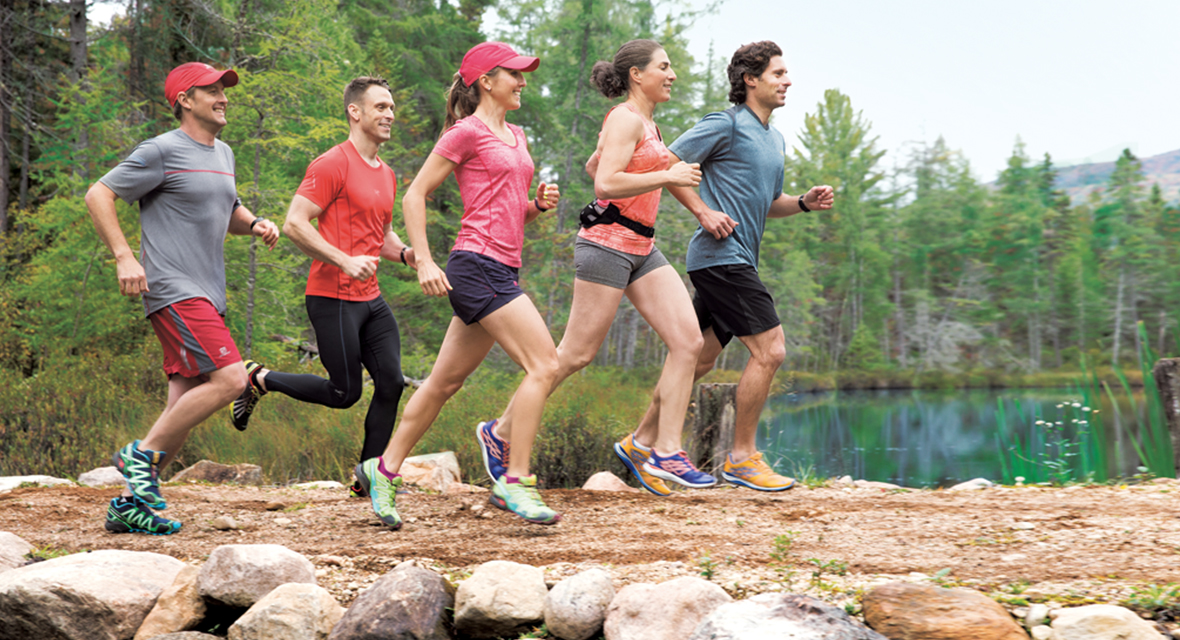
Trail running: strides, tips and equipment
Healthy body, healthy nature. This could be the trail runners’ motto. What’s not to like about running among the vegetation and breathing in the scents of soil and trees? It couldn’t be easier! You just need the right gear to get out and enjoy the run!
1. Leave the city behind
There are plenty of advantages to trail running, which certainly explains the growing number of trail running enthusiasts. Being out in nature and enjoying the tranquility is very fulfilling. For trail runners, it’s much less boring than jogging on asphalt, and it’s the perfect excuse to leave the city behind, breathe in the fresh, pure forest air, wind among the trees, spot some animals and enjoy the scenery that road running doesn’t offer.
Trails you need to check out
Must-run trails
- Mont-Royal Park is one of the most beautiful places to run trails among the trees without leaving the city. Crisscrossed with trails at a variety of levels that lead up to the iconic cross at the top and a panoply of steeper, more technical trails.
- Mont Tremblant National Park is a magical place to get out of the city and take on some very nice trails.
- The Parc du Domaine Vert in the Lower Laurentians is a beautiful forest park crisscrossed with trails for runners of all levels.
2. How to choose the right type of trail
Unlike running on asphalt, trail running offers more “flexibility” and thus less risk of impact on the back or joints. Nevertheless, make sure you run on a trail at your level and fitness. For example, if you’re a beginner, stick to flatter, more even trails; if you’re an experienced runner you can choose tougher trails with dips and hills. If you go for a more technical trail, you’ll work your cardio while you work your muscles.
Ideally, you want a trail with no rocks or roots sticking out, unless you’re up for a particular challenge.
3. Wear the right trail running shoes
The inconvenient principle of trails, in fact, their very nature, is their “irregularity”. The ground is unstable, so the risk of sprains is higher. How can you avoid injuries? You can start by investing in shoes designed for trail running! They’re stronger, and they have crampons and soles with a better grip for better traction.
Some shoes even offer additional protection on the sole, to give the shoes even more stability, and some even have protection over the toes.
Finally, depending on the season, there are two types of shoes to choose from:
- More breathable models (for summer jogging);
- Water-resistant models (for running in the spring, fall and winter) made with Gore-Tex membranes.
When you take on your first trail, forget your traditional running shoes and leave your worn out old running shoes in the back of the closet.
4. Stay concentrated
Trail running is definitely not boring, but pay attention to roots and rocks. Don’t forget to stay alert to spot obstacles and avoid a wipe-out.
5. Adapt your running technique
Trail running is all about the adventure, while performance is secondary. Here are some tips to start you out:
- Warm up before you hit the trails! So that you don’t hit a wall too quickly, start with a quick walk.
- Modify your stride to suit the terrain you’re taking on. For example, if it includes more obstacles, smaller strides are better.
- Be careful on the descents, because they can be slippery. The goal is not to get hurt. Establish a good position: stabilize your centre of gravity and take smaller steps to maintain control.
- Take the ascents at your own pace. If you run full out going up-slope, you risk exhausting yourself to quickly. It’s better to walk, keeping a pace of more steps per minute, then hit the ground running when you get to the top.
Forget everything you’ve been told about traditional jogging technique. Rather, listen to your body and read the environment as you move through it, accelerating and slowing down when you feel it. Finally, as in any endurance sport, pay attention to progressing at a reasonable rate, in both effort and practice.
How can I avoid running injuries?
- Invest in shoes designed for trail running.
- Make sure your shoes are snug: if your shoes are too big, you increase the risks of friction (and therefore blisters) around the toes.
- Wear socks meant for jogging to avoid blisters. The best socks for train running? Socks made of merino wool.
- Adapt your running technique to your level and the course.
— GEAR UP FOR YOUR RUN —
[ Error ]











